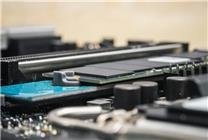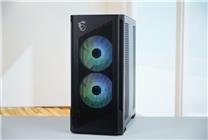Soaring Memory Prices and Kioxia’s Profit Decline: An Industry Overview
Key Takeaways:
- Memory and flash memory prices have surged, with contract prices rising over 50% recently.
- Kioxia reports a significant profit drop, despite increased revenues due to low-margin products.
- Experts anticipate a recovery for Kioxia, focusing on its SSD offerings amid strong AI demand.
In recent weeks, the memory and flash memory markets have witnessed unprecedented price hikes. Reports indicate that contract prices have increased by more than 50%, with spot prices in some cases doubling over the past month. Major players such as Samsung, SK Hynix, and Micron have experienced skyrocketing profits and stock prices due to this surge. However, the situation for Kioxia, a prominent Japanese manufacturer, presents a contrasting narrative.
Kioxia’s Financial Landscape
Kioxia released its financial report for the second quarter, ending in September, showcasing a mixed performance. The company achieved revenues of 448.3 billion yen, marking a month-on-month increase of 30.8% and exceeding market expectations. However, it still reflected a year-on-year decline of 6.8%. What is more concerning is Kioxia’s net profit, which plummeted to 40.7 billion yen—a staggering decrease of over 62% compared to the previous year. This decline can largely be attributed to the rising share of low-margin products in its portfolio.
Breakdown of Revenue Sources
Delving deeper into Kioxia’s revenue streams, its core SSD and storage business accounted for 55% of total revenue in the second fiscal quarter. Within this segment, the data center and enterprise-level businesses contributed approximately 60%, while PC-related sales made up the remaining 40%. A notable highlight was the smart device revenue, which rose significantly by 99% month-on-month, primarily due to seasonal smartphone demand and the transition towards eighth-generation BiCS flash memory technology.
Challenges and Future Outlook
Despite this increase in smart device revenue, the low margin associated with these products has negatively impacted Kioxia’s overall profitability. Furthermore, cloud service providers are increasingly demanding shifts from SSD to flash memory supplies, resulting in a reduced volume of finished products purchased from Kioxia. This transition has further exacerbated the downward pressure on profits, leading to a substantial decline in Q2 earnings.
Kioxia’s stock performance mirrored its financial challenges, dropping only 1.6% in the Nikkei market. However, its American Depository Receipts (ADRs) experienced a more drastic decline, plummeting by 30% and reaching a price of $62, which in turn affected the overall U.S. memory chip market. Major companies such as SanDisk, Seagate, and Western Digital saw their stock prices drop by 7%, 5%, and 5% respectively, while Rambus faced a 2% decline.
A Glimmer of Hope
Despite the stark financial report, industry experts suggest that Kioxia may soon find itself on an upward trajectory. Following its recent performance slump, some predict a bottoming out, which could lead to eventual recovery. Kioxia has indicated that supply constraints in flash memory are prevalent, coupled with robust demand driven by artificial intelligence applications. Moving forward, the company plans to concentrate more on SSDs, which could enhance profitability as the demand landscape evolves.
In summary, while the broader memory market is buoyed by rising prices, Kioxia faces unique challenges that have led to a significant decline in profits. Nevertheless, the company’s strategic pivot towards high-demand products like SSDs may position it for recovery in the future.






